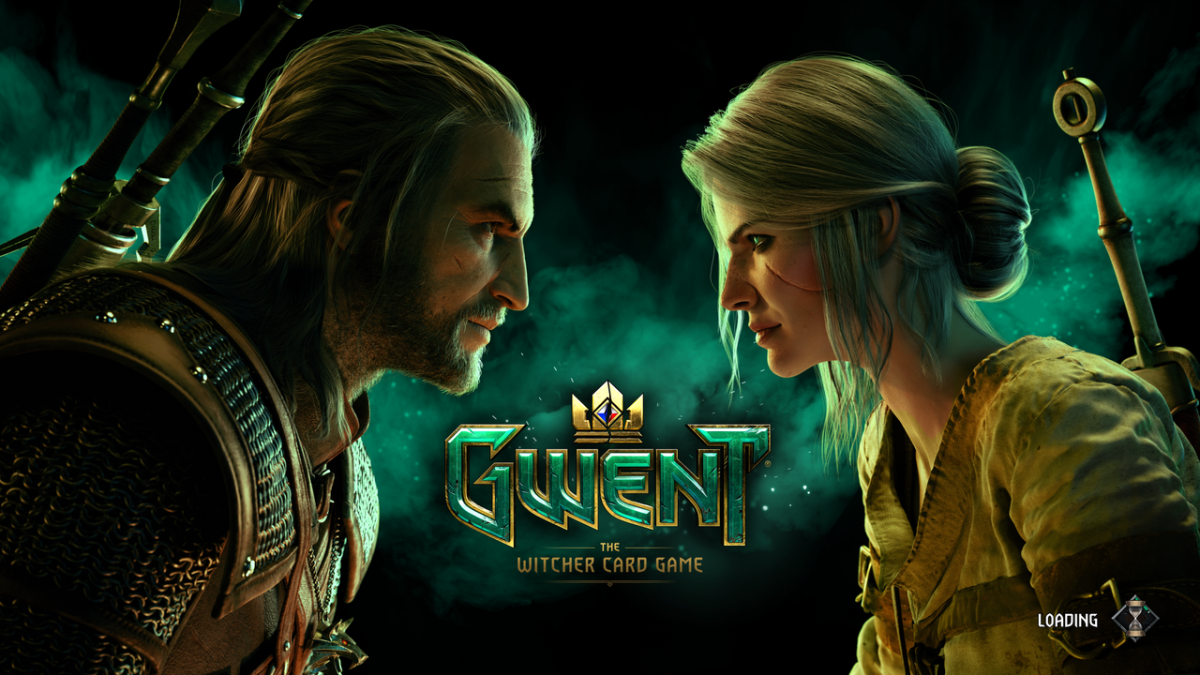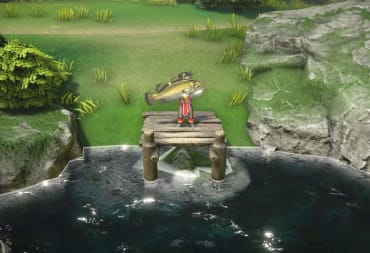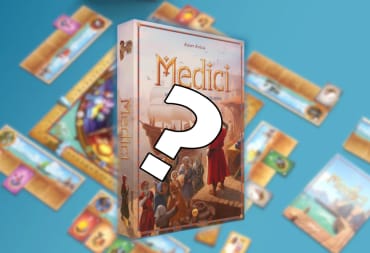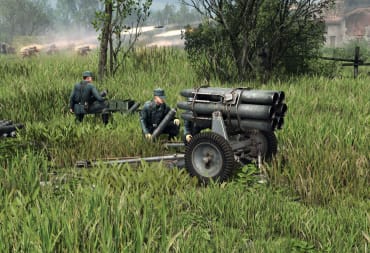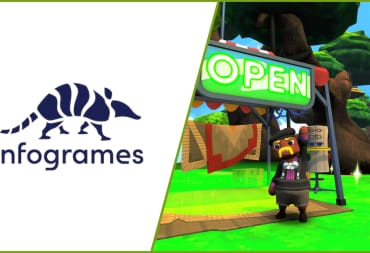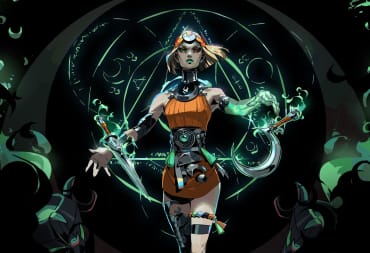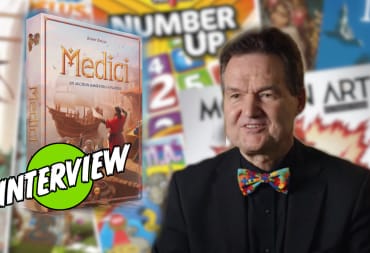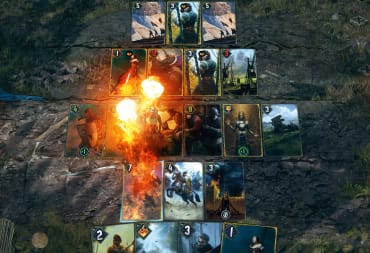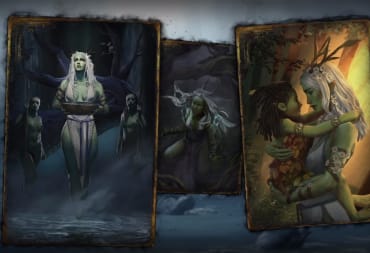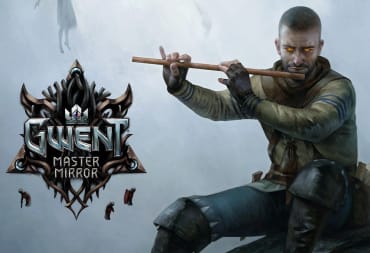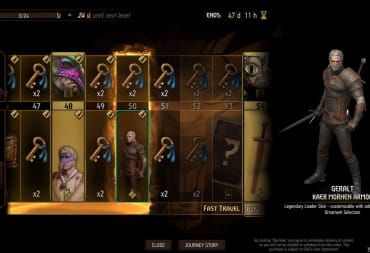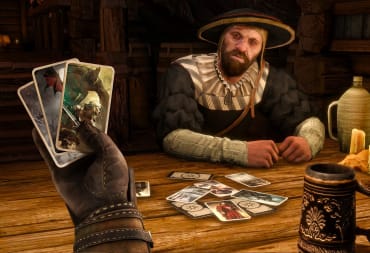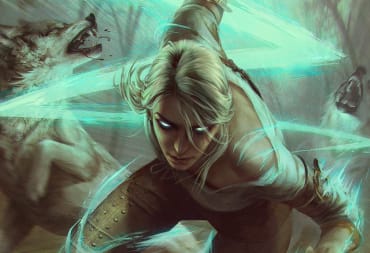The Gwent: Homecoming open PTR was announced on October 5 and it was available to play for five days. I’ve been obsessed with Gwent since the closed beta started in October 2016, though I’ve played much less in the past year thanks to the infamous Midwinter update in December 2017. I still held high hopes for this brilliant collectible card game, and I was glad to know a major overhaul was in the works. It was a necessary reactive measure to several issues introduced in the Midwinter update, which was almost unanimously hated by the Gwent community. Another factor was that Thronebreaker, which was supposed to be a single-player expansion to Gwent, grew into its own standalone spin-off, now due for release on October 23. It seems that at first, it was Gwent that informed the design of Thronebreaker, but then it was the opposite, at least as a product.
This is evident in the art direction seen in Homecoming. The boards are now much darker and grimmer, more in tune with the vision of a battlefield. Leaders are now 3D models overseeing the battlefield, with fully animated taunts. This does add some ambiance to the game, but it's mostly cosmetic. Most veteran Gwent players won't care much for it, and some are afraid they won't be able to run the game on old PCs anymore. Either way, it's a bold new look. All that gorgeous card art is now in full display on the board, not like the little stamps we had before.
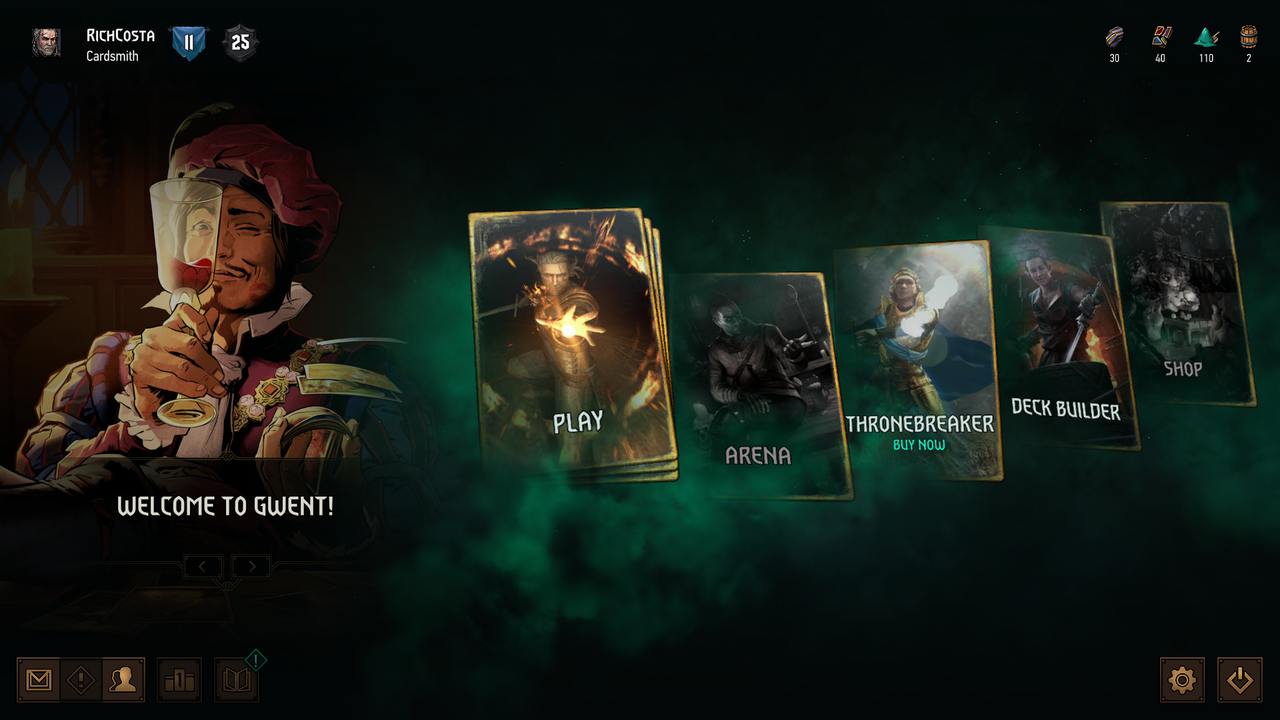
My major concerns about the overhaul going in revolved around the two fundamental changes to gameplay. They removed the bottom Siege row and limited bronze cards to two copies instead of three. After playing it for a few hours, I realize that rows matter much more now. Perhaps more than they ever did in the past. Some card effects simply won't trigger if the player places the card in the wrong row. Gwent has become more complex in that sense, especially compared to the Midwinter update, where rows became completely meaningless.
There's still some concern when it comes to the two copies of bronze cards, which reduces the potential for tutoring. Gwent lost some of that excitement of pulling cards from your deck in a succession of tutors. This is likely an attempt to keep the game more balanced, and it just might succeed. Still, many players will miss the tutor chains, myself included. Maybe it's for the best, but we'll have to wait and see.
Another major change is adding the Tactical Advantage card to the side of the player who lost the coin flip. Losing the coin flip (having to make the first move) was a major disadvantage in Gwent, exposing the player to several tactical exploits. So this card appears automatically on the board, and the player who lost the coin flip can boost another unit by five points. This solution seems to satisfy most players.
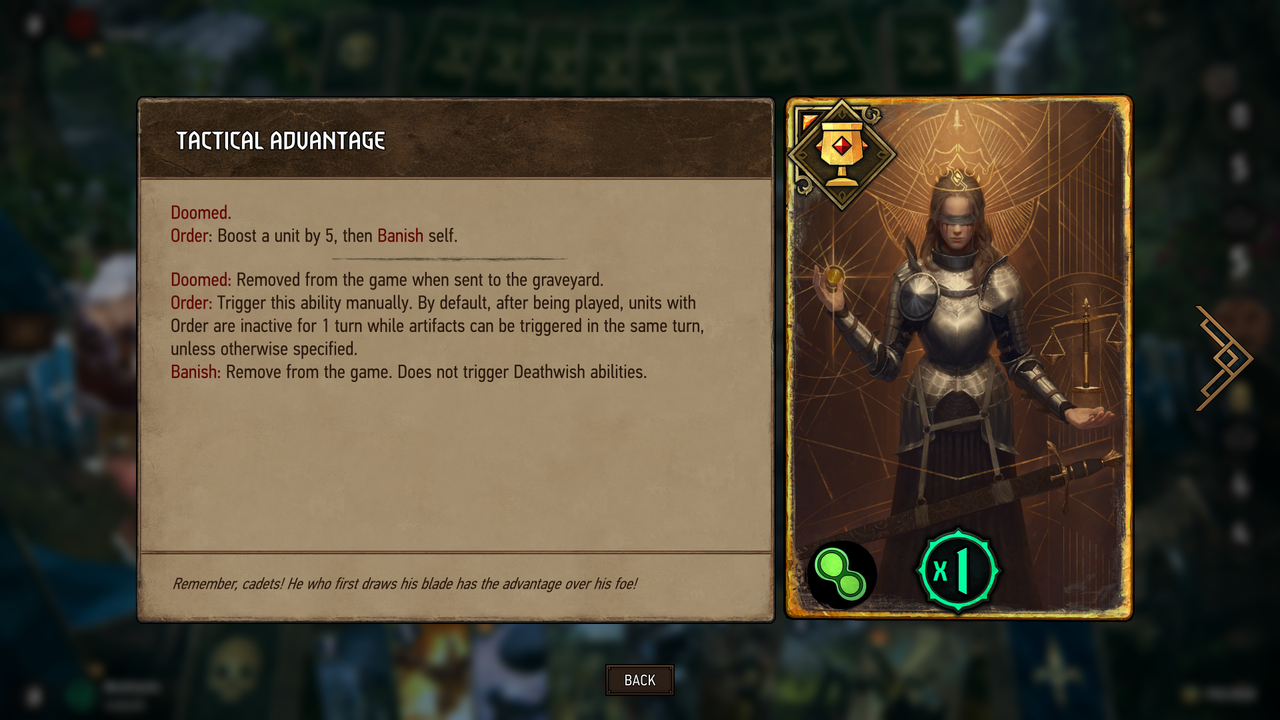
Bound with the coin flip conundrum was the major issue of card advantage. In many ways, it defined the winner of the match. The overhaul introduces a hand limit of ten cards. After each round a player has to draw three cards, and if there is an excess of ten cards the game automatically discards the extra ones. This is effective in preventing a "dry pass" on the first round, which reduced Gwent to a one-round match, as the player who won the first round would often dry pass on the second round as well. It's one of the things that long-time players will struggle to adapt to, but it might be for the best.
Deckbuilding has become much more complex with the introduction of a provision system. Decks have a maximum provision of 165 points and 30 cards. Gold cards are worth 6 to 15 provision points, and bronze cards 4 to 9 points. All silver cards are now gold cards, which is an effective way to make most cards viable in some way or another. A problem with deckbuilding in Gwent was always that many cards seemed useless. The overhaul reduces this problem with more prominent synergies.
Out of all the new mechanics introduced, “Order” is likely the most interesting and most fertile in terms of potential. It's also in keeping with the idea of a battle, making the player a commander giving orders to subordinates. It's a bit of a slow burn at first, but it becomes a satisfying mechanic after a while. Not that it's perfect in its current state, but it should enable more creative maneuvers in the future once it's properly refined.
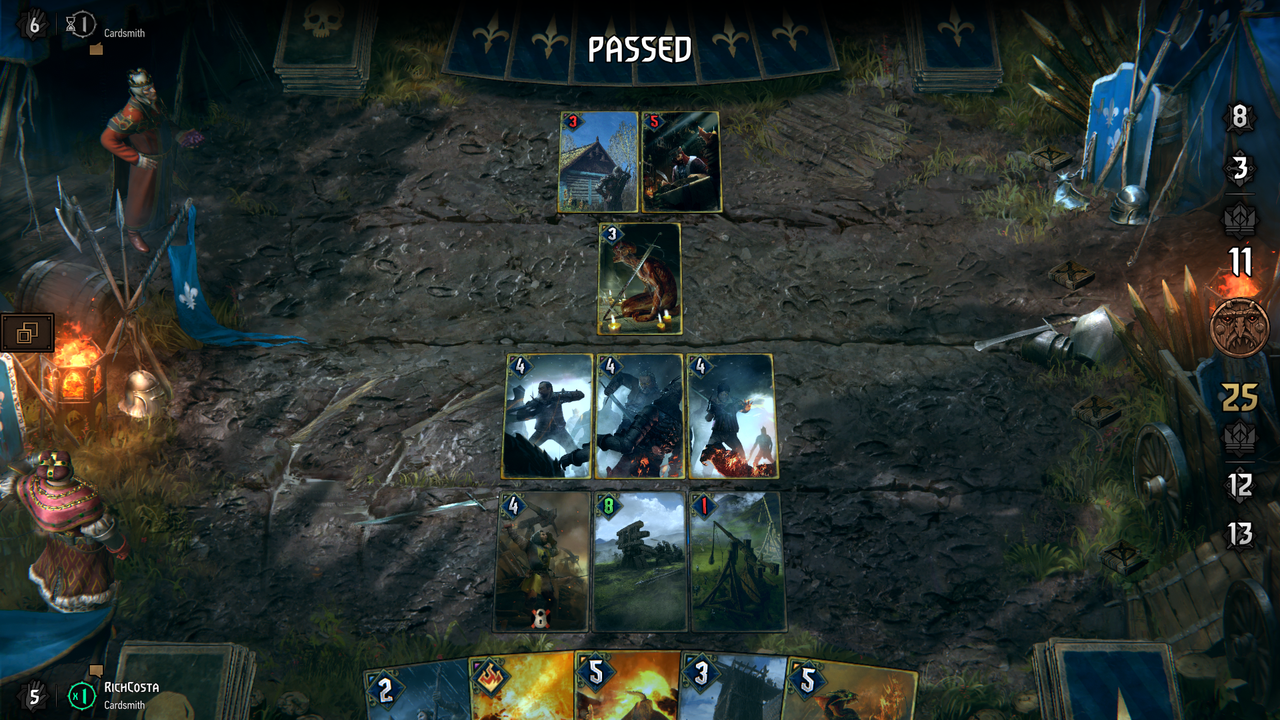
I made a point of winning a match with each faction to see whether there was at least some balance. Some factions took more effort than others. Northern Realms, which is now highly dependent on “engine” cards, was one of those. “Engine” cards are those with mechanics that rely on other cards. They are often less effective or useless if the opponent removes them. This is a hard problem to solve, and I doubt they will solve it in time for launch.
The biggest issue for me was that the new client plays much more slowly. Almost painfully slow. Each action seems to have a delay. The pass button and the cards feel unresponsive at times. And the fact that you can't hold the cards with the cursor when you select them just doesn't feel good. Sometimes you're not sure if you selected the right card, and to place it you just see a bright blue vertical line on the board instead of the card.
My first impression of the new pass system was that it felt awful to play. You have to pass manually, and wait for the player to pass as well, which they sometimes forgot. Since some of the new mechanics require that the player interacts with the cards on the board, it's no longer an auto-pass. It's somewhat like how in Magic: The Gathering Arena the player has to wait for the opponent’s confirmations if they have Instant cards in hand. This was never a thing in Gwent, and understandably many players will hate it. Thankfully, they can still fix this. The client should be able to detect when no more interactions are possible and auto-pass.
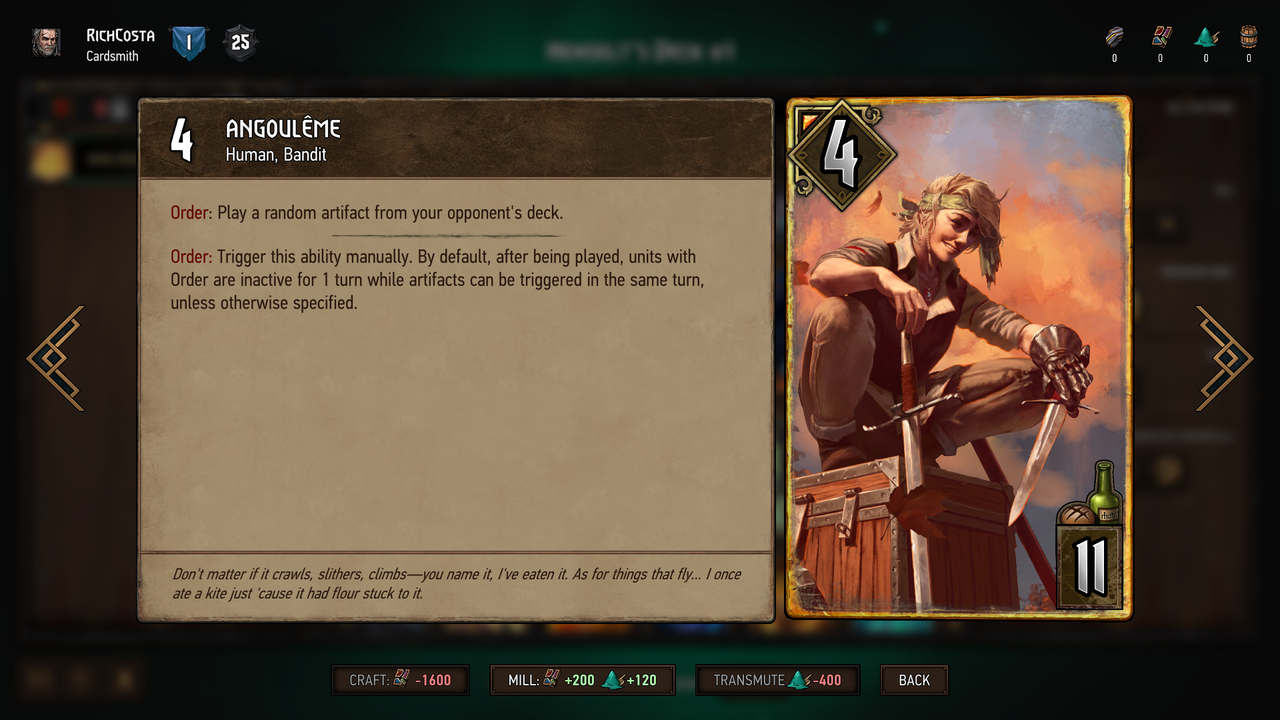
The new UI is more understated when it comes to card effects. There are tiny icons that indicate the opponent locked a card, for instance. While it looks elegant, it's something that players will overlook occasionally, and it might affect gameplay. Not to mention that it doesn't feel like a battlefield when you just see a tiny little icon on the card. The original chain animation around the card looked much better. After all, the whole point of the overhaul was to make it feel more like an actual battlefield.
A technical issue reported by many players was that the deckbuilding mode was very intensive and overheated the CPU. I also found this to be the case. It seemingly had something to do with the animation loops of premium cards consuming a lot of processing power. When I switched to exclusively standard cards, overheating was no longer an issue.
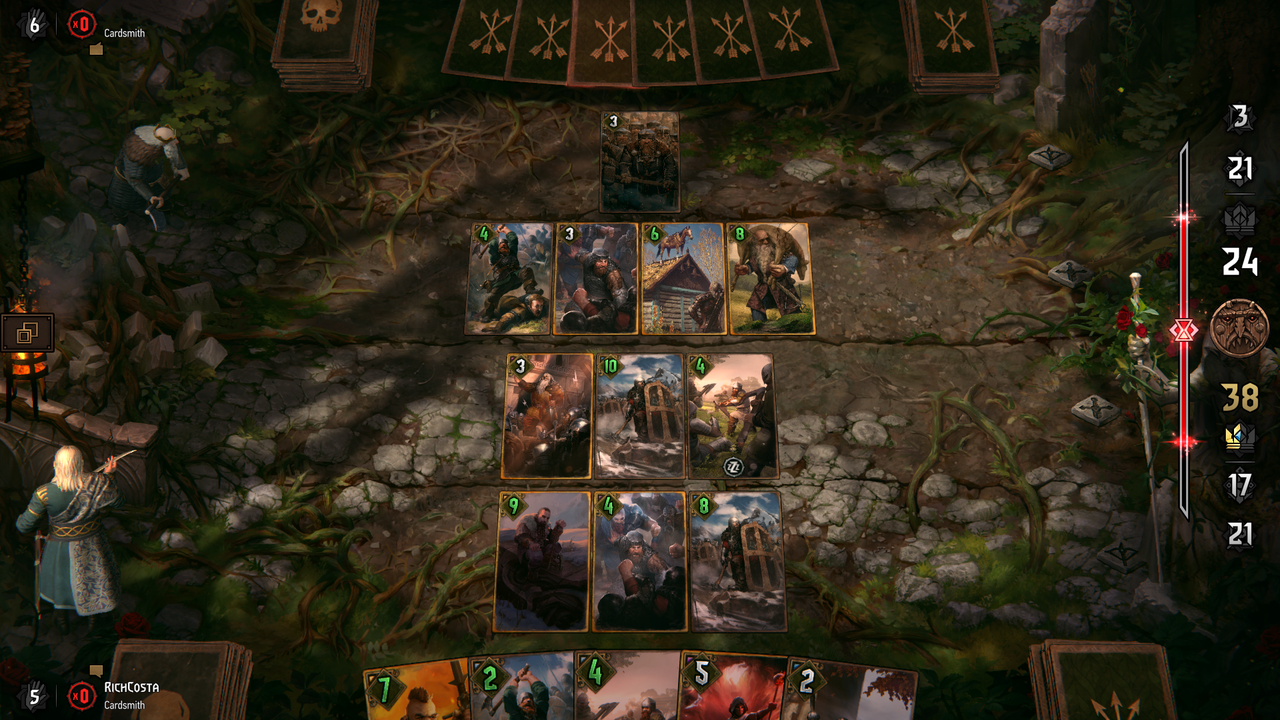
Throughout its two-year beta, Gwent always turned stale as one or two factions or archetypes dominated the meta. The mechanics didn't seem to allow much innovation when it came to new cards. The designers seemed to head into a dead end in terms of possibilities. I believe that Gwent will prolong its shelf life by quite a few years with this overhaul. Especially if the developers keep listening to the community's feedback.
I'm still somewhat skeptical that Homecoming will solve all the issues that CD Projekt RED intended to solve. It's likely that other issues will arise, and players will exploit overpowered cards and bugs somehow. This PTR build was available for five days, while the Midwinter PTR was only available for two days. I still wish there was more time for the community to experiment and report bugs.
All things considered, it's a definite step forward for the minigame-turned-standalone. At its core, it remains Gwent: a unique and intricately tactical card game in three rounds. The overhaul shows a commitment from the developers in making it viable and compelling in the long-term. I would hate to see it flounder and die out after spending so many hours on it, even after so many frustrations and losses. Gwent: Homecoming has a great future if the developers continue to listen to player feedback and make a priority of balancing factions, archetypes, and cards.
TechRaptor previewed Gwent: Homecoming through the open PTR program via GOG.
Previews you can trust: To ensure you're getting a fair, accurate, and informed review, our experienced team spends a significant amount of time on everything we preview. Read more about how we review games and products.
Have a tip, or want to point out something we missed? Leave a Comment or e-mail us at tips@techraptor.net
